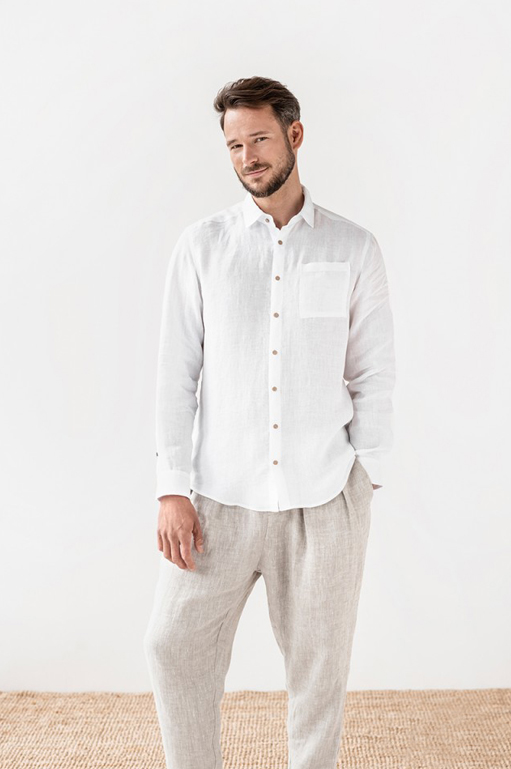Handy Facts For Selecting Hemp Clothes
Wiki Article
How Sustainable Is Hemp When Compared To Cotton, In Terms Of Water Use As Well As Pesticides And Herbicides?
The hemp plant is thought to be more sustainable than cotton in terms of herbicides, pesticides, water use, etc.
Hemp- Hemp has a low water requirement compared to other crops like cotton. It is a drought-tolerant and low-irrigation plant. Hemp is often cultivated using rainwater alone in many regions which makes it a efficient choice for water use.
Cottonis a commodity that is known for its excessive water consumption. Cotton farming requires extensive irrigation that can lead to water shortages in the local area and even depletion in areas with water stress. Cotton farming's water-intensive nature has led to questions regarding its viability.
Herbicides and pesticides
Hemp - Hemp's natural resistance to a variety of pests, diseases and weeds helps reduce the need for synthetic pesticides. The chemical use in hemp is much lower than other crops, such as cotton. The hemp cultivation process organically is non-pesticide.
Cotton farming - Traditional cotton farming typically is heavily dependent on chemical pesticides and herbicides to manage weeds and pests. The application of these chemicals could cause environmental harm which include water and soil contamination, harm to species not intended for them, and the development of pesticide-resistant pests.
Summary: hemp is considered to be a more environmentally green plant compared to cotton when it comes to water consumption, pesticides, herbicides.
Hemp requires less water for growth and is usually grown using rainwater, minimal irrigation, or without water at all.
Hemp is resistant to a variety of insects, diseases and fungi. This means that it reduces the need of synthetic pesticides.
Hemp cultivation usually involves less synthetic herbicides and pesticides when in comparison to conventional cotton.
It's crucial to be aware that environmentally-friendly and sustainable methods vary among farmers. Organic farming is also a major factor in the long-term sustainability of hemp as like cotton, as it reduces the amount of synthetic chemicals that are used and improving the health of the soil. Concerning the impact on the environment of clothing and textiles choosing organic and sustainably made fibers will lessen the ecological footprint. Read the recommended hemp clothing for more recommendations including hemp trousers, hemp sportswear, jeans hemp, patagonia hemp jacket, patagonia work pants hemp, 100 hemp t shirt, hemp dress, hemp athletic wear, organic hemp fabric, hoodlamb jacket and more.

What Makes Hemp Clothing Technically And Functionally Superior To Traditional Fibres?
Hemp clothing has a variety of technical and functional advantages over other fabrics, as well as being sustainable. Hemp clothing comes with a variety of advantages which make it an ideal environmentally friendly and high-performance option.
Hemp fibers are highly air-tight and moisture-wicking, which makes hemp clothing very comfortable to wear in various conditions. They aid in wicking water away from your body. This can keep you cool, dry and reduce the chance of bacteria and odors.
Temperature Regulation
Hemp clothing offers excellent thermoregulating properties. It keeps you warm during cold temperatures by capturing heat close to the body and help you stay cool in warm conditions by allowing heat as well as water to be able to escape. The ability to regulate your body's temperature naturally will help you avoid changing clothes frequently.
Durability and long-term durability:
Hemp is well-known for its strength. Hemp clothing is stronger and more able to wear than clothes made of other fibers, like cotton. The durability of hemp clothing ensures that it will last for longer, which reduces the necessity to replace them and, thus, reducing the impact on the environment.
UV Protection
Hemp fibers shield the skin from harmful UV rays. This is a feature that is particularly useful when you are outdoors.
Biodegradability:
Hemp clothing biodegrades over time, which means it breaks down when it is disposed of. It's a fantastic method to reduce the amount of textile waste and the impact on the environment.
Low environmental impact-
Hemp cultivation typically requires fewer synthetic pesticides and herbicides than conventional cotton. The hemp plant uses less water and therefore is an ideal choice for the ecological environment. This green aspect is further enhanced through organic farming.
Carbon Sequestration
Hemp plants have the ability to capture carbon dioxide in the atmosphere as they develop. The hemp plant is cultivated as a carbon-sink, which aids in reducing the level of greenhouse gases.
Sustainable Crop Rotation
Hemp can also be added to systems of crop rotation. This helps improve the health of soils while reducing the likelihood of disease development and soil loss. This sustainable farming method contributes to the eco-friendliness.
Versatility:
Blending hemp fibers with other materials such as organic cotton and recycled polyester can create eco-friendly, high-performance fabric blends. This versatility enables the development of innovative, sustainable textile products.
Low Toxicity-
Hemp is naturally low in toxics and does not require extensive processing using chemicals during manufacture, reducing the environmental impact.
It is important to remember that even though hemp offers a myriad of environmental and practical benefits but the sustainability of clothing is contingent on other factors such as dyeing processes transport, ethical working practices. People who are looking to live a greener lifestyle must choose brands of clothing that use hemp and other sustainable fibres and place a high value on transparency and ethical manufacturing practices. Read the recommended I was reading this on hemp clothes for website advice including hemp underwear, hemp sweatpants, hemp tee shirts, hemp apparel fabric, patagonia double knee pants, hemp golf shirts, patagonia iron forge pants, organic hemp hoodie, jungmaven t shirt, patagonia double knee pants and more.

What Are The Benefits Of Wearing Bamboo Clothing For Comfort And The Environment?
Bamboo clothing has many advantages for both comfort and environment.
Bamboo fabric is famous for its softness. It is a silky, silky texture that is easy to wear. Bamboo clothing has a silky soft texture that makes it popular for intimate wear, activewear, and loungewear.
Breathability Bamboo fibers breathe and help to wick away moisture. Micro-gaps permit air circulation, which keeps you cool during hot temperatures. Moisture wicking helps to draw sweat off your skin.
Bamboo clothing has excellent properties for thermoregulation. It helps keep you warm in cooler temperatures by capturing heat close to your body. In the heat, bamboo clothing keeps you cool by allowing moisture and heat to go away. Bamboo clothing is appropriate to wear all year round because it can adapt to different temperatures.
Bamboo fabric is hypoallergenic and soft for skin that is sensitive. It will not trigger irritation or allergic reactions. This makes it a suitable choice for people who suffer from skin sensitivities or allergies.
Bamboo fibers can be resistant to odors thanks to their antimicrobial properties. Bamboo clothing is able to stay fresh even after physical activity.
Environment-
Sustainability- Bamboo can be a sustainable and renewable resource. Bamboo is among the fastest growing plants in the entire world. It grows with minimal water usage and doesn't need any pesticides. Bamboo can be harvested and it will regenerate itself from its roots.
Bamboo is naturally water efficient. It can be grown without irrigation, and is often harvested using rainwater alone. This minimizes the environmental impact of water use in the field of agriculture.
Biodegradability. Bamboo clothes are biodegradable. They naturally decompose with time. This decreases the amount of nonbiodegradable textiles that end up in the garbage dumps.
Carbon Sequestration. Bamboo can be used to store CO2 during its rapid expansion. Bamboo cultivation serves as an absorber of carbon dioxide, reducing the levels of greenhouse gases as well as helping to reduce the effects of climate changes.
Chemical Reduction The bamboo fabric is made using less chemical treatment than other textiles. This minimizes the environmental impact of textile production.
Closed-Loop Systems Bamboo fabric production employs closed loop processes which recycle chemicals and water. This minimizes pollution and waste.
The impact on the environment of bamboo clothing can differ depending on how they are produced and whether the bamboo is from forests that are sustainably and responsibly managed. Consumers should only buy bamboo clothing that is produced using sustainable ethical practices in order to reap the greatest environmental benefits. Check out the best continued on bamboo clothes for blog examples including bamboo yoga pants, bamboo shorts, bamboo maternity, bamboo ladies pants, bamboo jeans ross, boody bamboo underwear, bamboo newborn clothes, bamboo ladies clothing, bamboo undergarments, bamboo yoga pants and more.
